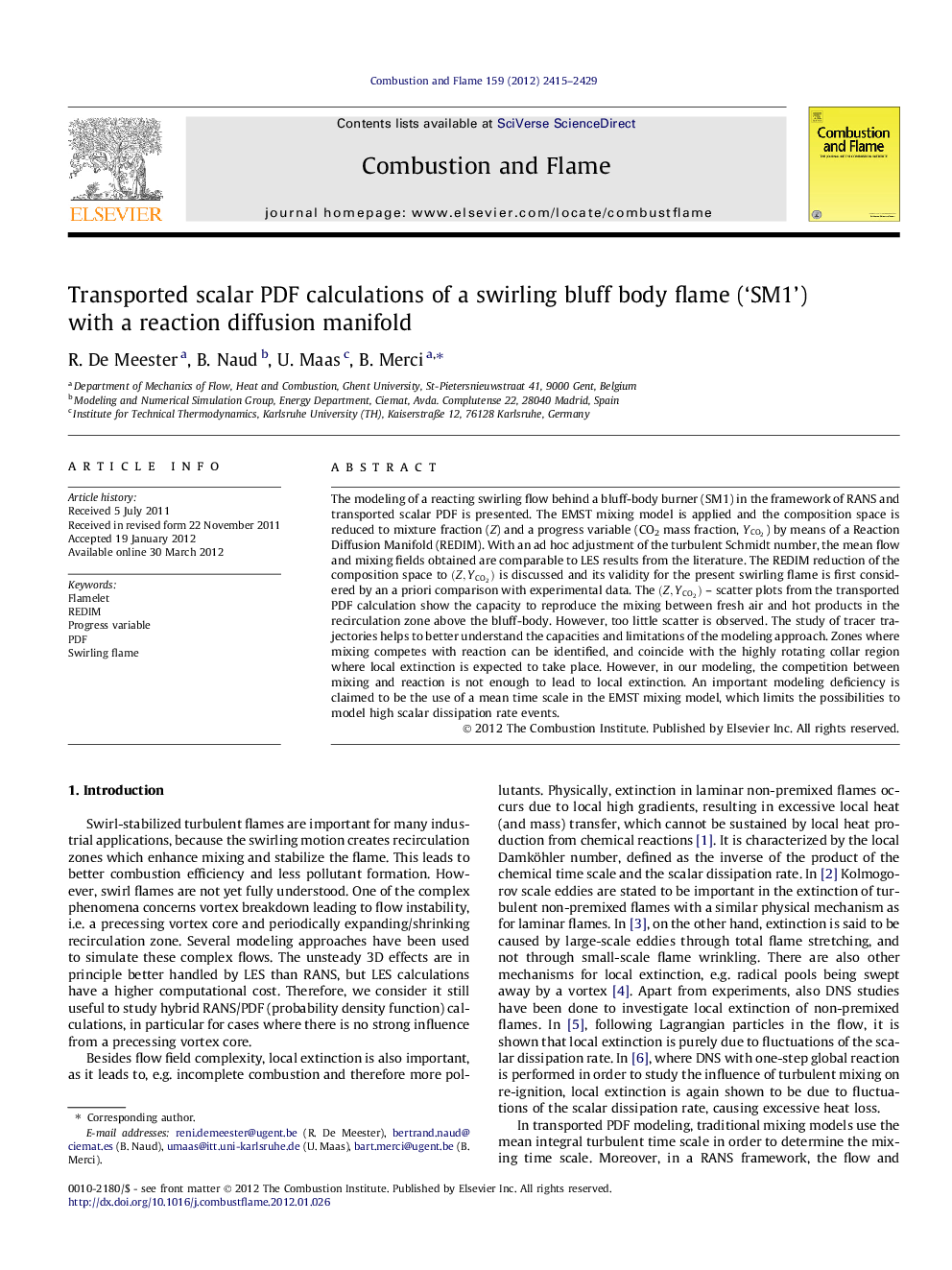| Article ID | Journal | Published Year | Pages | File Type |
|---|---|---|---|---|
| 10264691 | Combustion and Flame | 2012 | 15 Pages |
Abstract
The modeling of a reacting swirling flow behind a bluff-body burner (SM1) in the framework of RANS and transported scalar PDF is presented. The EMST mixing model is applied and the composition space is reduced to mixture fraction (Z) and a progress variable (CO2 mass fraction, YCO2) by means of a Reaction Diffusion Manifold (REDIM). With an ad hoc adjustment of the turbulent Schmidt number, the mean flow and mixing fields obtained are comparable to LES results from the literature. The REDIM reduction of the composition space to (Z,YCO2) is discussed and its validity for the present swirling flame is first considered by an a priori comparison with experimental data. The (Z,YCO2) - scatter plots from the transported PDF calculation show the capacity to reproduce the mixing between fresh air and hot products in the recirculation zone above the bluff-body. However, too little scatter is observed. The study of tracer trajectories helps to better understand the capacities and limitations of the modeling approach. Zones where mixing competes with reaction can be identified, and coincide with the highly rotating collar region where local extinction is expected to take place. However, in our modeling, the competition between mixing and reaction is not enough to lead to local extinction. An important modeling deficiency is claimed to be the use of a mean time scale in the EMST mixing model, which limits the possibilities to model high scalar dissipation rate events.
Related Topics
Physical Sciences and Engineering
Chemical Engineering
Chemical Engineering (General)
Authors
R. De Meester, B. Naud, U. Maas, B. Merci,
